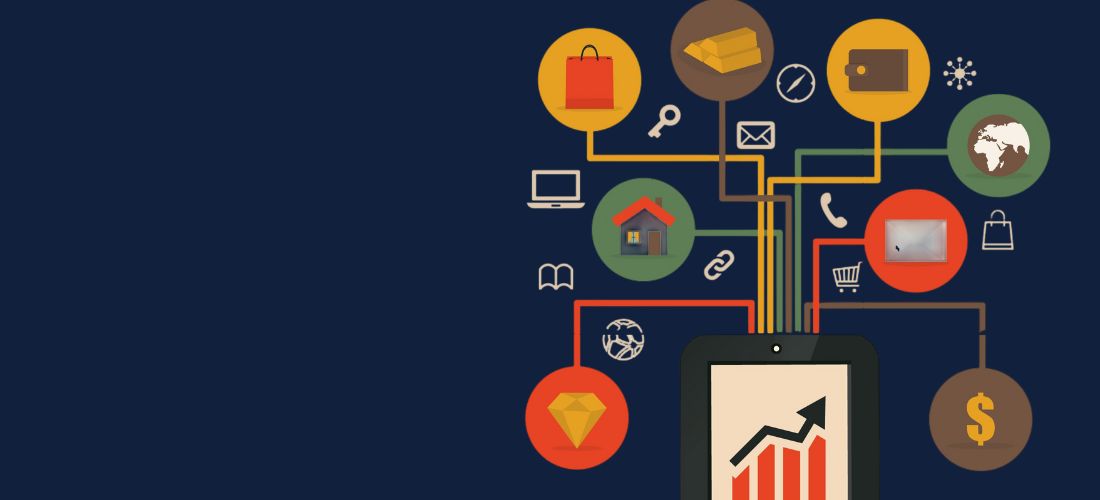IoT and Analytics: Understanding Sensor Data

In our hyper-connected world, IoT devices are everywhere, quietly collecting data at every turn. Whether it’s smartwatches monitoring our heart rates or sensors optimizing city traffic, these devices generate massive amounts of data that offer both challenges and tremendous opportunities. How can businesses transform this flood of data into actionable insights? Let's explore the intricacies of IoT sensor data analysis and discover how companies can leverage it for a strategic edge.
The Rapid Growth of IoT and Its Impact
IoT has seamlessly integrated into our daily lives. According to Statista, by 2025, over 30.9 billion IoT devices will be operational worldwide. This surge is not merely about increasing device numbers but also about the vast data they produce. Today's businesses must transform this raw data into actionable insights to remain competitive and relevant. As these devices become more embedded in our environments, effectively leveraging their data becomes crucial for success across industries.
Overcoming Challenges in IoT Sensor Data Analysis
Effectively analyzing IoT sensor data requires overcoming several critical challenges that can impede the ability to derive meaningful insights. Here, we explore strategies to navigate these obstacles and maximize the potential of IoT data.
Handling Data Volume and Scalability
The sheer volume of data from IoT devices can be daunting. Consider a smart city project that generates terabytes of data daily from sensors monitoring traffic, weather, and pollution. Handling such massive data volumes necessitates flexible storage options and efficient processing systems.
Cloud-based solutions are essential. They offer flexible resources that can scale with your data needs, eliminating the need for substantial physical infrastructure investments.
Tackling Data Diversity
IoT data is diverse, ranging from structured spreadsheets to unstructured videos and images. This variety presents challenges in data integration and analysis since each format demands unique processing methods.
Advanced data integration tools can standardize these formats, making it easier to extract valuable insights and streamline the analysis process.
Ensuring Data Quality and Accuracy
High-quality data is essential for accurate analysis. IoT devices, particularly those in harsh environments, might produce noisy or incomplete data. Implementing robust cleaning and validation processes is vital to maintaining data integrity.
Machine learning algorithms excel at detecting and correcting anomalies, ensuring the data used for analysis is reliable and insightful.
Cutting-Edge Techniques for IoT Sensor Data Analysis
To tackle the complexities of IoT data, companies are adopting advanced techniques that leverage modern technology. Here are some innovative approaches revolutionizing IoT sensor data analysis.
Embracing Machine Learning and Deep Learning
Machine learning and deep learning are game-changers in IoT data analysis, uncovering patterns, spotting anomalies, and making predictions based on historical data.
Convolutional Neural Networks (CNNs) are adept at analyzing images, such as those captured by drones for disaster management, and identifying areas affected by floods or landslides. Meanwhile, Recurrent Neural Networks (RNNs) excel at predicting energy consumption patterns in smart grids due to their ability to process sequential data.
Starting with basic models and gradually incorporating more complex algorithms can deepen your analysis. Platforms like Google Cloud AI simplify deploying these models.
Leveraging Real-Time Analytics
IoT devices often generate real-time data, necessitating immediate analysis. Real-time analytics frameworks like Apache Kafka and Apache Storm enable businesses to process data on the fly, providing timely insights for decision-making.
In manufacturing, real-time analytics can monitor equipment health, predicting failures before they occur and minimizing downtime. This anticipatory strategy lowers maintenance expenses and enhances operational productivity.
Platforms like Apache Flink and Amazon Kinesis are excellent for handling high-speed data streams, ensuring that businesses can react to changes as they happen.
Utilizing Edge and Fog Computing
Edge and fog computing tackle data latency and bandwidth challenges by moving data processing nearer to its source. By analyzing data at the network edge, businesses can reduce the amount sent to the cloud, saving bandwidth and enabling quicker responses.
Smart traffic systems exemplify this, using edge computing to process data locally and allowing for real-time adjustments to traffic lights based on current conditions. This setup helps reduce congestion and improve urban traffic flow.
Strategically deploying edge computing devices in latency-sensitive areas can improve responsiveness and lighten the load on centralized data centers.
Key Applications of IoT Sensor Data Analytics
With the sophistication of IoT technology, its applications are expanding across various industries, transforming operations. Let's explore some key areas where IoT sensor data analytics is making a significant impact.
Enhancing Smart Cities
IoT analytics is crucial for smart city initiatives, optimizing resource management, and improving residents' quality of life. Sensor data is used to streamline traffic, manage waste, and enhance air quality.
Barcelona's smart parking system, for example, directs drivers to available parking spots, reducing congestion and emissions. Such innovations enhance urban living and contribute to environmental sustainability.
Collaborating with urban planners and tech providers to identify key areas for IoT implementation can maximize the benefits of smart city solutions.
Transforming Healthcare
In the healthcare sector, IoT devices track patient vital signs, delivering real-time information to medical professionals. This continuous monitoring can lead to quicker diagnoses and more personalized care.
Wearable devices track vital signs, alerting healthcare professionals to potential issues before they become serious. This forward-thinking approach enhances patient outcomes and decreases healthcare expenditures.
Integrating IoT analytics with electronic health records (EHRs) offers a comprehensive view of patient health, facilitating more informed decision-making by healthcare providers.
Revolutionizing Agriculture
IoT analytics helps farmers optimize crop yields by providing insights into soil conditions, weather patterns, and pest activity. By leveraging sensor data, farmers can make informed decisions about irrigation, fertilization, and pest control.
IoT devices monitor soil moisture levels, triggering automated irrigation systems only when necessary, conserving water and reducing costs. This sustainable approach increases crop yields and reduces environmental impact.
Continuous monitoring of environmental conditions and real-time adjustments in farming practices lead to higher yields and more sustainable operations.
Strategies for Effective IoT Data Management
Successfully managing IoT data involves implementing strategies that address storage, security, and interoperability challenges. Here are some effective approaches to consider.
Optimizing Data Storage
Selecting an appropriate storage solution is essential due to the vast amount of IoT data. Cloud storage offers scalability and flexibility, while edge storage provides rapid access to time-sensitive data. A hybrid approach often balances these needs.
Evaluating data storage needs based on data type and intended use is essential. Utilizing cloud storage for archiving and edge storage for time-sensitive data helps optimize resource allocation.
Prioritizing Security and Privacy
Protecting IoT data from unauthorized access and ensuring data privacy is paramount. Implementing robust encryption, access controls, and compliance with regulations like GDPR helps safeguard sensitive information.
Conducting regular security audits and updating encryption protocols can mitigate potential threats. Role-based access controls limit data exposure, enhancing security.
Ensuring Interoperability and Adopting Standards
Interoperability between IoT devices and platforms is essential for seamless data integration and analysis. Using industry standards and protocols enables seamless data sharing between different systems.
Participating in industry consortia helps businesses stay updated on emerging standards and best practices, ensuring compatibility across devices and platforms.
Future Trends in IoT and Sensor Data Analytics
Several emerging trends are set to shape the future of sensor data analytics. These developments promise to enhance capabilities and open new opportunities for businesses.
Leveraging Advanced Machine Learning Models
Emerging machine learning models, such as Transformer-based architectures, promise to enhance the accuracy and efficiency of IoT data analysis. These models can process large volumes of data, uncovering complex patterns and insights.
AI-Driven Automation
AI-driven automation will play a crucial role in managing and analyzing IoT data. Applying standardized protocols ensures smooth data exchange across different systems.
Integration with Blockchain
Blockchain technology offers potential solutions for securing IoT data, ensuring data integrity, and facilitating transparent data sharing. By integrating blockchain with IoT systems, businesses can enhance data security and trust.
Shaping the Future with IoT Analytics
IoT and analytics are transforming industries by providing unprecedented insights into sensor data. By overcoming challenges related to data volume, heterogeneity, and quality, businesses can unlock the full potential of IoT analytics. With advanced machine learning models, real-time processing capabilities, and robust data management strategies, organizations can harness IoT data to drive innovation, improve efficiency, and create a smarter, more connected world.
By doing so, they can turn sensor data into powerful insights, giving them a competitive edge. Embracing these advancements allows businesses to shape a future where smart, data-driven decisions drive success and lead to meaningful change.
Stay ahead in digital transformation with fresh insights, effective strategies, and real-world case studies. Enhance your competitive edge by exploring our expert guides on the latest technologies.




